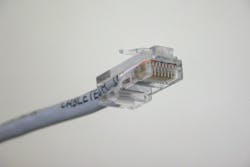According to a recent report from market research firm IHS Inc., revenues from the sale of network video equipment are finally expected to top that of analog devices for the first time in 2014. While IP video technology offers end users numerous benefits, such as increased system flexibility and scalability, the fact remains that many organizations have yet to take advantage of network video for a myriad of reasons. For some, the hesitancy to migrate comes down to a lack of budget to make the necessary upgrades for an IP camera network. Others simply don’t want to waste the infrastructure investments they’ve made in analog.
To better understand what is holding some organizations back from adopting IP video, as well as what the future holds for the industry, SIW recently spoke with Daniel Murray, key account manager at Bosch Security Systems and Matt Powers, technical director for security solutions at Anixter. Murray, Powers and Henrik Hansen, head of Milestone’s Manufacturer Alliance Program, will take part in a panel discussion hosted by Bosch, Milestone and Anixter at next week’s ASIS conference in Chicago. The panel session, which will be held from noon to 1 p.m. in room N140 at the McCormick Place Convention Center, will examine current industry challenges as it relates to IP video implementation, how to create a successful migration roadmap and what the future holds for standards and technology innovation. A complementary lunch will be served. Click here for more information or to register.
SIW: What is the biggest obstacle currently facing end users that want to make the leap to IP video technology?
Murray: The migration path and the related knowledge is still one of the biggest impediments to the adoption of IP-based solutions. Analog is inherently interoperable, easy to install and use. The power and flexibility of IP technology also means that many advanced features are often proprietary, complex and complicated. Bosch understood this dilemma and founded ONVIF together with Sony and Axis. This was an important step back to the desired interoperability of the analog days.
Powers: It’s hard to limit this to just one because there is so much confusion in the market today as end users shift to IP video. One of the biggest obstacles I hear about is interoperability in a multi-manufacturer environment. In the analog world, for the most part, systems offered some level of interoperability because of standards such as NTSC or PAL. With IP video, end users have to rely on manufacturers to collaborate to develop interfacing technologies, which can be a huge concern for end users that need solutions today and don’t want to go down a dead-end path. There is, however, light at the end of the tunnel with the development of IP-based interoperability standards such as ONVIF. ONVIF will allow end users to build a true open-architecture solution that will offer forward and backward compatibility.
SIW: What can the industry do better to help end users across the spectrum begin to implement and take advantage of the benefits offered by IP devices?
Murray: With the founding of ONVIF, today’s dominant standard, the industry took a big step toward openness and interoperability. However, this only deals with the basic functionality of video technology: live and recorded video and PTZ control. ONVIF is addressing emerging technologies like access control and video analytics (but only from a format perspective in the storage of the metadata in the video stream). A key for the end users to begin to take advantage of more advanced technologies will be the collaboration and cooperation among hardware and software manufacturers. Bosch has invested heavily in their Integration Partner Program (IPP) to bring this philosophical change directly to the market. End users require a best-of-breed architecture so industry competition (cooperative competition) will be imperative to escalating the adoption curve.
Powers: Many times I see the industry lead with technology first, which doesn’t necessarily address the end user’s current application challenges. As an industry, we need to focus on the customer’s application and help them understand how they can use interoperable technology to address their applications. There is no question that IP technologies outperform analog. We should help them determine proper use cases so they are assured they are selecting the best technology solution for their application.
SIW: How has the evolution of standards and innovations in video technology itself helped IP migration and adoption?
Murray: Standards and innovations are slightly at odds when discussing advanced product developments. While standards cover a minimal set of use cases, features and command sets across the majority of vendors in our industry; innovation is very individual, not a standard and thus not covered by the standards organizations. These innovations are the pull for IP and actually push the migration and adoption of emerging technology as end users demand greater functionality and utility from their investment. This provides a justification for the investment and an acceptable ROI for both the manufacturer and end user.
Powers: End user confidence has increased with the evolution of standards and innovation. From a standards standpoint, ONVIF provides a baseline interface that end users can leverage in multi-manufacturer solutions. No longer are they dependent upon manufacturer-only interfaces. There has also been an increase in technology quality and performance. Here, for example, we’ve seen an increase in the quality of high-resolution cameras, rather than just a race to the highest resolution. We’ve seen improved performance in applications that have lighting challenges such as lowlight or wide dynamic range.
About the Author
Joel Griffin
Editor-in-Chief, SecurityInfoWatch.com
Joel Griffin is the Editor-in-Chief of SecurityInfoWatch.com, a business-to-business news website published by Endeavor Business Media that covers all aspects of the physical security industry. Joel has covered the security industry since May 2008 when he first joined the site as assistant editor. Prior to SecurityInfoWatch, Joel worked as a staff reporter for two years at the Newton Citizen, a daily newspaper located in the suburban Atlanta city of Covington, Ga.

